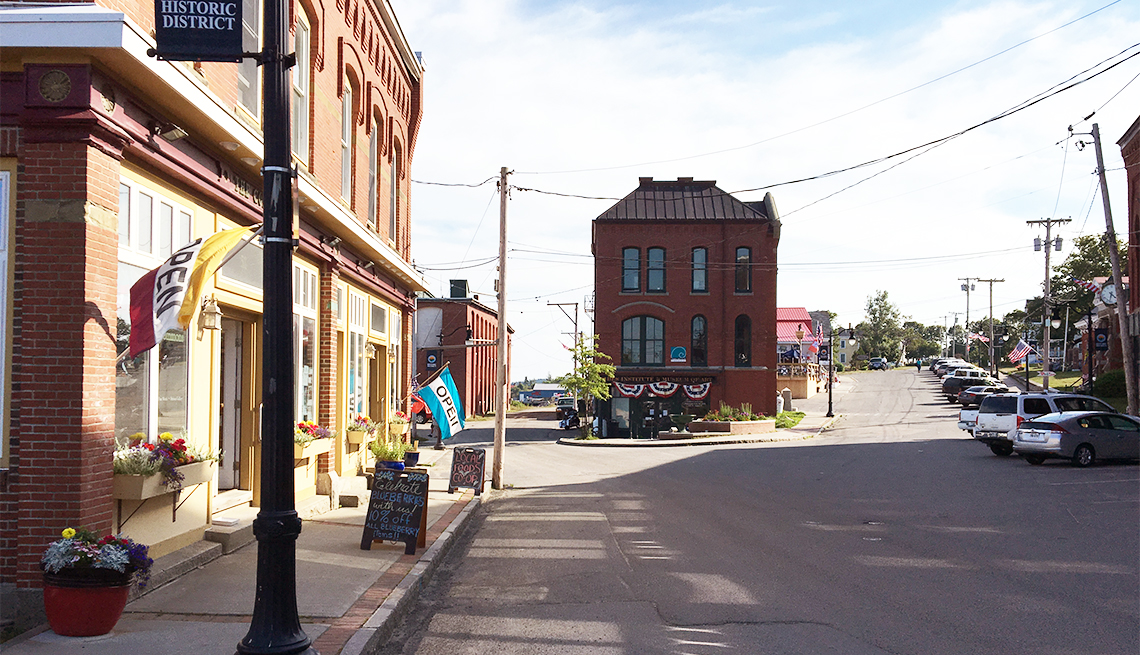
- Select a language for the TTS:
- UK English Female
- UK English Male
- US English Female
- US English Male
- Australian Female
- Australian Male
- Language selected: (auto detect) - EN
Play all audios:
In 2003, when Lora Whelan moved to Eastport, 1,600 people lived in the remote, easternmost community in the United States — a 12-square-mile city near the Canadian border. A decade later,
the population count had dropped to 1,300, with more than 60 percent of the residents age 55 or older. Whelan, the publisher of the local newspaper, _The Quoddy Times,_ well understood that
for Eastport to thrive and survive, the community needed more people. Knowing that several of the city's residents telework for national and global companies, she wondered, "What
if Eastport could attract more telecommuters?" Water Street in downtown Eastport features shops, restaurants, a waterfront park and the local library. Edward French/The Quoddy Tides
After convincing the Eastport City Council to make telecommuter recruitment a municipal initiative, Whelan created a survey for 20 local teleworkers, who formed an ad hoc telecommuting
committee. What, she asked them, made Eastport so appealing? "I was getting a constant refrain," Whelan recalls. "The cultural events — Eastport has an arts center, museum,
symphony, theatre — affordable housing, walkability, generous volunteerism, friendliness and a school system with low student: teacher ratios." The Eastport telecommuter recruitment
website — Telecommute-Maine.com — launched in September 2016, and inquiries soon came from as far away as Alaska. A waterfront park along Water Street includes seating and a Little Free
Library book giveaway display. Photo by Melissa Stanton That Eastport is two hours from a major airport and shopping mall, and much of the drive is along narrow side roads, is not considered
a detriment by the city's residents. Colie Brice, a teleworking IT consultant, moved to Eastport with his wife and their grade-school age son in 2012 after hearing about the city from
a friend. One visit convinced the couple to buy a house: "20 times less expensive than it would be in New Jersey," he says about their home state at the time. "We've
lived in some really cool places, but I’ve found the experience here unparalleled," says Brice. "The community is eclectic and creative. We got out of the New York metropolitan
area and right away our blood pressure came down dramatically." Despite his joy, Brice is quick with a warning: "If you need to be near a big chain restaurant, you _will _be
disappointed!" Looking southward, Sea Street veers to the left, Water Street to the right. Photo by Melissa Stanton This article is an excerpt from the "Work, Volunteerism and
Opportunity" chapter of the AARP book _Where We Live: Communities for All Ages — 100+ Inspiring Ideas From America’s Community_ _Leaders_. Download or order your free copy. _Reporting
by Sally Abrahms | Page published September 2017 _ More from AARP.org/Livable Use the dropdown to choose a livability topic. Select a Subject






:max_bytes(150000):strip_icc():focal(999x0:1001x2)/IMG_8510-copy-2000-13c4f056975640df9ddc2bf6637821d2.jpg)